
6th September, 2024. Photos and Videos and Comments to follow



















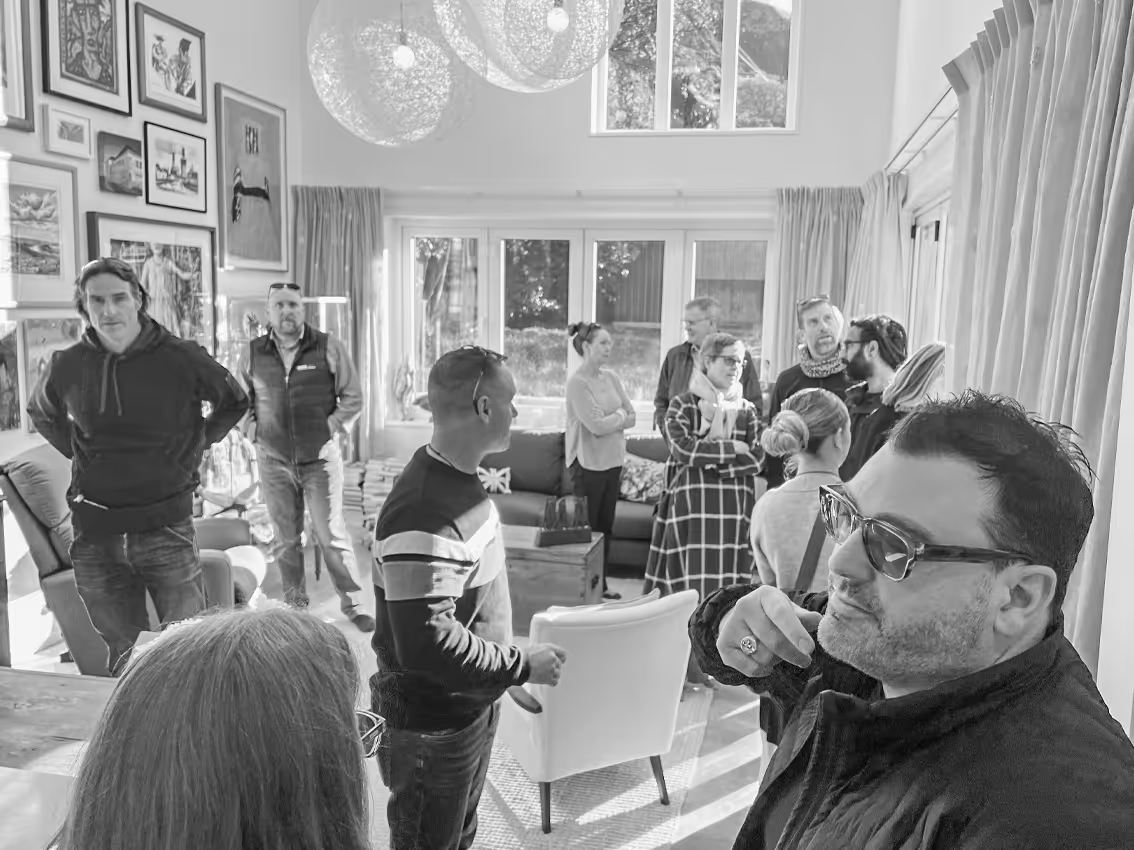




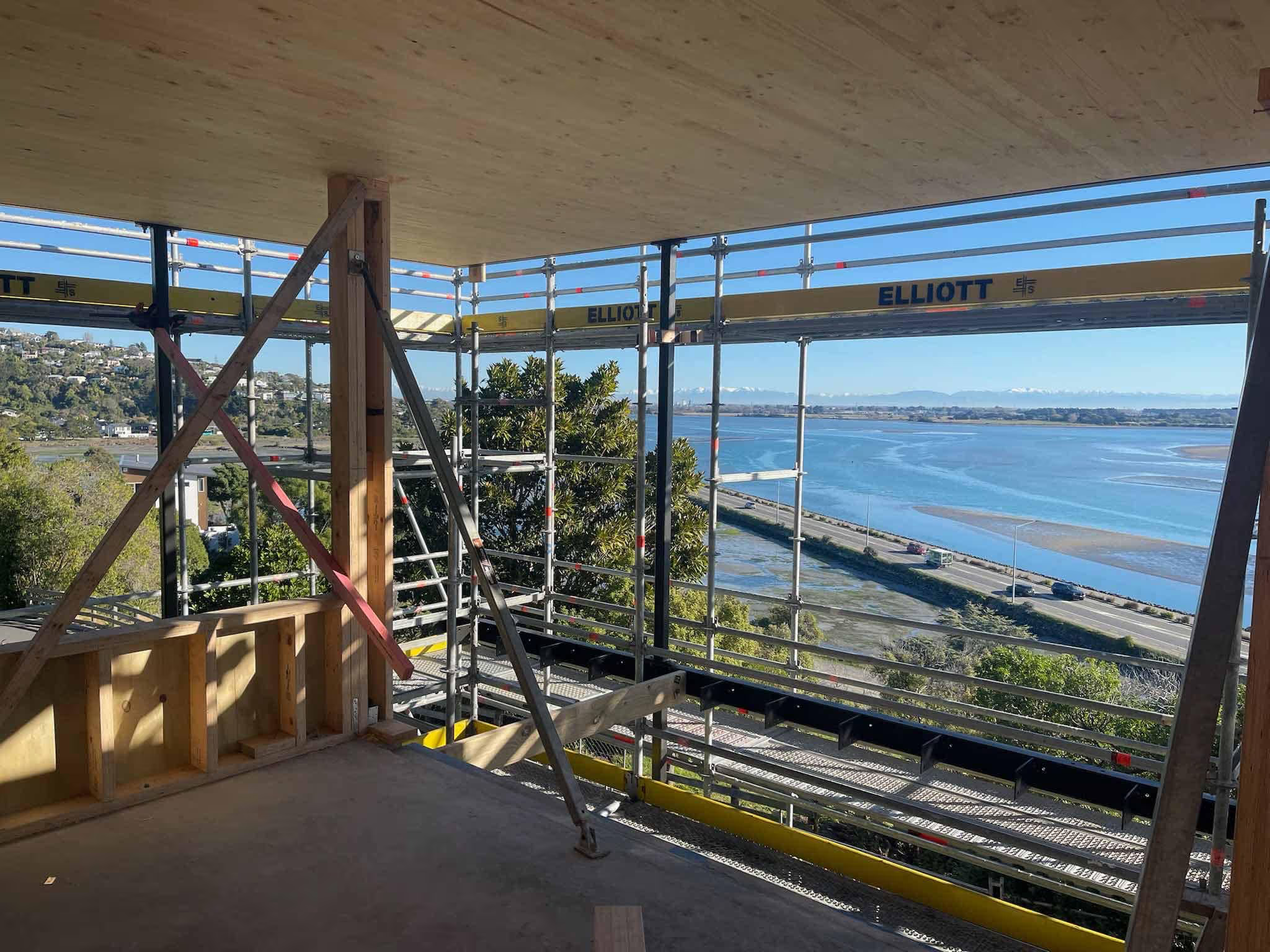







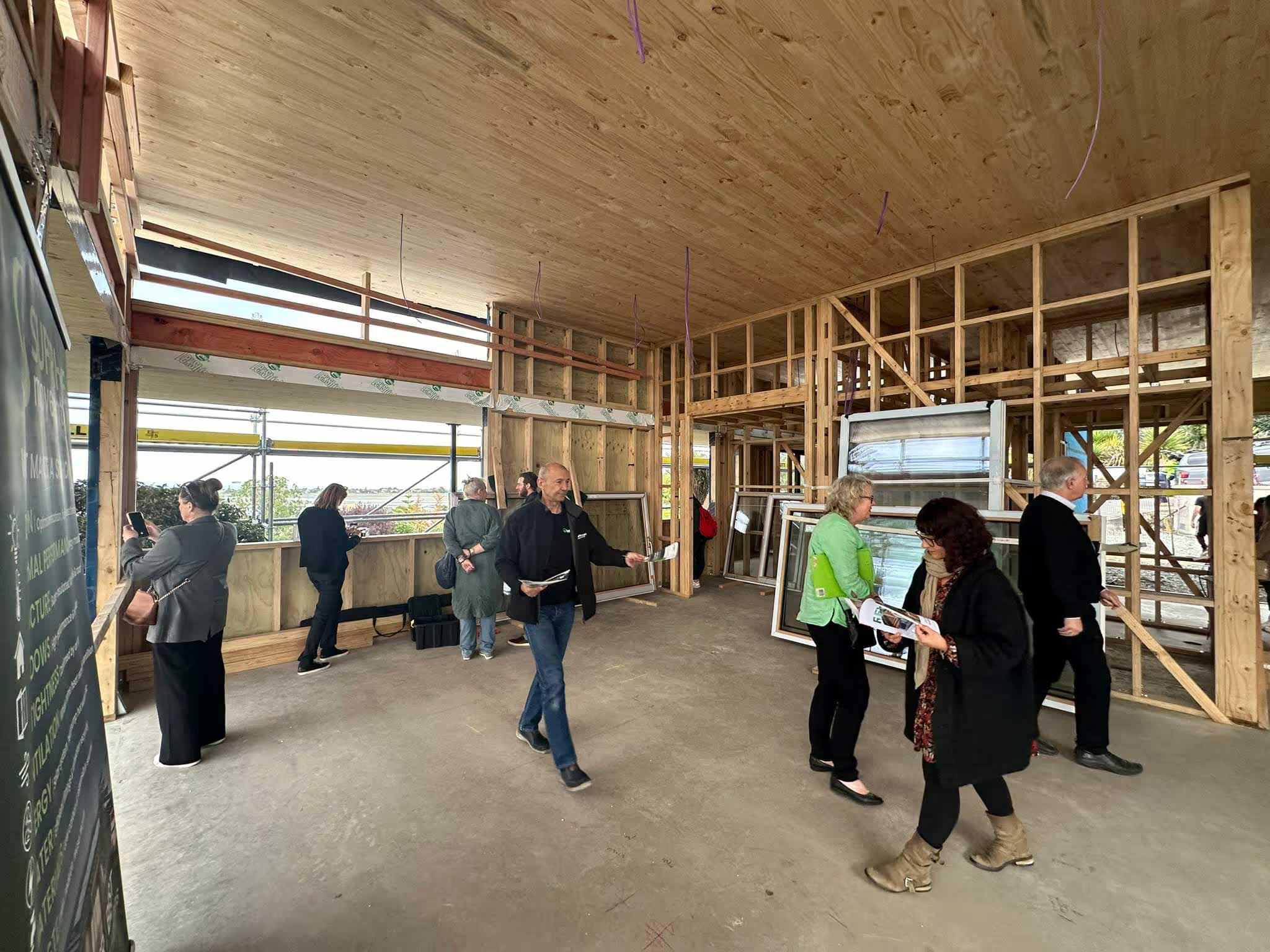














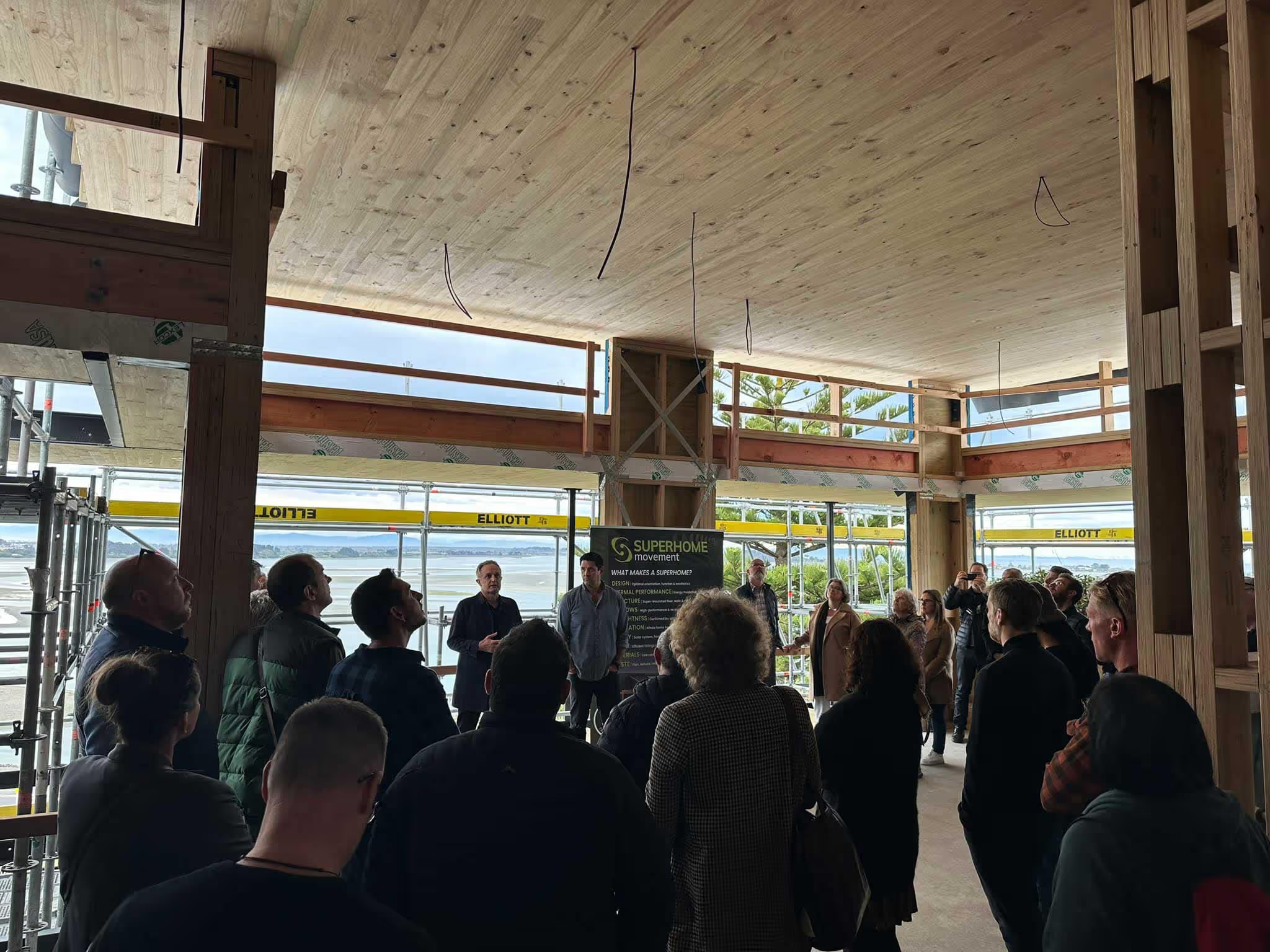


Homes featured on the 2024 Superhome Bus Tour

Winchester Street, Lyttelton
Designed by Fiona Macpherson Architecture and built by Dan Saunders Construction this energy-efficient home seamlessly nestles into a small space within Lyttelton’s historic village. Its layout cleverly maximizes the limited area, while paying homage to Lyttleton’s past with a classic weatherboard exterior.
The house employs advanced materials and systems that are now standard in Superhome builds.
Beneath the surface, a fully insulated foundation is accompanied by a hydronic underfloor heating system.
The 140 Series Ecopanel Wall System takes centre stage, providing excellent insulation and boasting airtight and weathertight layers, as evidenced by a great airtightness test result of 0.48 air changes per hour.
The exterior aesthetic is defined by UPVC double glazed windows, skylights, and the sleek lines of the hidden fixed standing seam wall and roof cladding.On the inside, a balanced ventilation system with heat recovery ensures a steady flow of fresh air into two bedrooms, a multi function room, and a study nook, while effectively expelling moisture-laden air from wet areas.

Aynsley Terrace
You might associate Character Builders as only specialising in Old home restoration and authentic period construction, but actually, this represents just one part of our business.
We are passionate about authentic architecture and sympathetic reconstruction – the architecture of this home is distinctly “Mid-Century Modern” from its 15-degree leaning wall and tapered footprint, through to the implementation of the original 1950 Aynsley house cedar weatherboards, repurposed in the feature stair balustrade and mid-century detailing.
With particular attention to energy-efficient building techniques and technology, a primary objective for the home was to achieve certified Superhome status, but at an affordable level and in a way that is environmentally sustainable.
The budget for this home was $500,000. To achieve this the brief was to design a small 135 sq metre home, with a good-sized garage and to keep things ‘simple’ and smart!
We then worked hard to source various recycled materials and components; incorporating them discreetly in ways that, not only look remarkable but also achieve significant cost savings for the owner and reduced impact on the planet.
Come and see what can be done when the budget is low but aspiration is high!
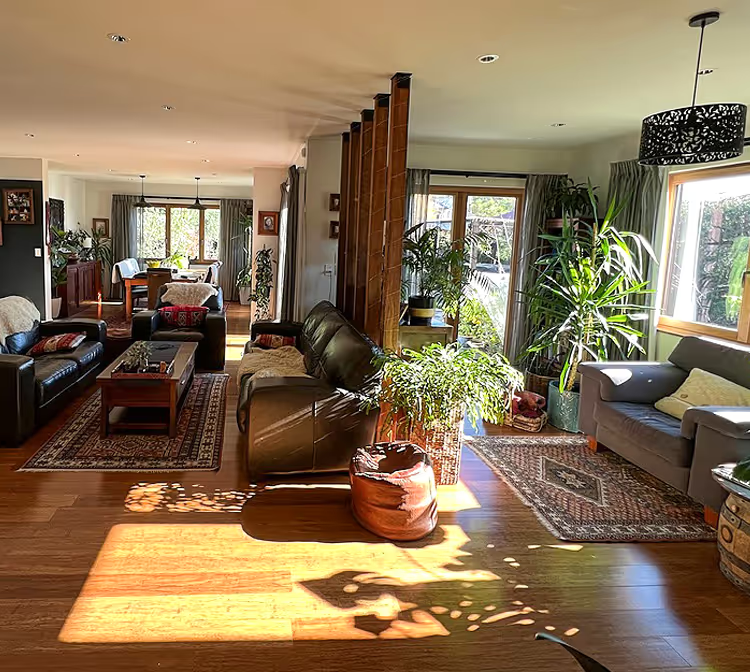
Hillsborough Tce
The Earthquake rebuild gave the owners a chance to build better in line with their aim to have an energy efficient, warm and healthy house.Built in 2014 it seems now the house was the Superhome before the Superhome Movement started.
Starting with Maxraft fully insulated foundation, Warmth NZ hydronic water heating and the Ecopanel framing with Pro Clima system and Moisture Master heat recovery ventilation this house has all the current SH participant elements in it.
Currently going through the SH certification process we can attest to 10 years of comfortable living.
Other features are no VOC emitting products, recent addition of 6kw of solar power and some use of materials from the old demolished house.

Huntsbury Home
Designed by Elizabeth Guthrey (Design and Make Architects) and under construction by Everett Norris (Everhomes), this low energy Strawbale house has been energy modelled to achieve under 15 kWh/m2 per annum. The airtight interior layer is achieved with the clay-based plasters on the walls along with intello membranes on the ceilings and plywood floor substrates. The thick strawbale walls will become a key visual feature and ensure warmth and comfort. Carbon from wheat stalks is harvested from the fields as a biproduct in Canterbury and stored in the walls as insulation. Terra lana wool insulation is selected for the thick roof and suspended timber floor. This house will have triple glazed timber windows fairly soon, however it is still under construction. At the time of the tour you will see the double stud timber frame structure, and a sample of strawbales put in the walls. The building is two story, a compact form, elongated to capture sun, and very minimal windows to the South. Eaves carefully placed for shading during the summer. The adjacent garage was built just one year prior and features traditional mortis and tenon timber frame construction.
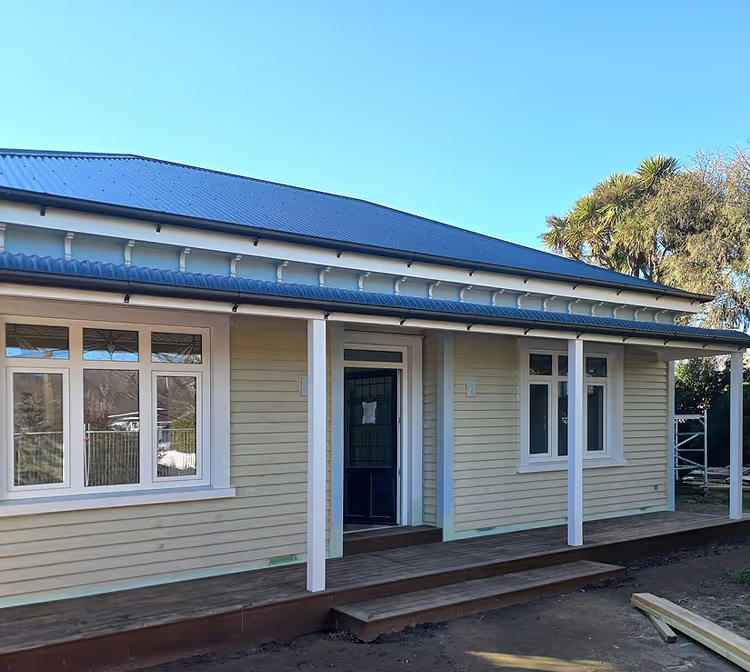
Sandwich Road
Meta Architects and Craft Limited have transformed this century-old Beckenham property into a cosy, modern family home. The extensive retrofit removed layers of outdated modifications, restoring the four-room bungalow to its original charm while adding a functional extension. Thermal modelling by Sustainable Engineering helped the client make informed decisions about energy-efficient materials. Period features were uncovered, salvaged, or recreated to maintain the property's historic character. Original stained glass was integrated into new double-glazed windows, demonstrating a seamless blend of heritage and high performance. Craft achieved 0.38 ACH at the pre-line blower door test, a stunning result when working with an existing structure. Meticulous attention to detail in the design and build resulted in a home that is both energy-efficient and aesthetically pleasing, ready for the next hundred years.

Watford Street Duplex
The original brief for the project was to design a new 3 bedroom certified passive house with a secondary 2 bedroom high-performance detached dwelling.
The design team responded by proposing two, double story buildings placed back-to-back along the north-south axis of the site. This arrangement allowed both homes to have their outdoor living space oriented to the north and maximised shared walls to drastically reduce heat loss. This decision also greatly reduced the extent of external cladding of each home. With the money saved the secondary dwelling was able to be increased in size and performance to match that of the primary dwelling.
A key requirement of the brief was low maintenance. The lower level of the building is clad in white brick with generous eaves to create shelter for the entrance on the south and summer shading for the main windows on the north. The upper level is clad in low maintenance colorsteel tray cladding. Careful attention had also been paid to summer shading of the upper levels with sliding shutters on the east and west and aluminum shrouds designed for the north facing main bedroom windows.
The building is constructed on a fully insulated concrete slab. The walls and roof are timber framed insulated with fiberglass batts. Walls are constructed without nogs and with internal ply as the airtightness/bracing layer. The windows are triple glazed with spruce frames and aluminum shielding to the exterior. Both homes feature balanced heat recovery ventilation systems and hot water pumps. The roofs accommodate extensive PV arrays which feed battery storage in the garages.

Balmoral Ōtautahi
Built by Dan Saunders Construction and designed by Bob Burnett Architecture, Balmoral Otautahi is an under-construction exemplar. The brief was to capture the stunning views without compromising on thermal performance, comfort, and earthquake resilience.
Replacing an earthquake-demolished house, Balmoral Ōtautahi aims to combine performance, resilience and safety with beautiful organic architecture. Out of adversity comes something super.
Expansive windows highlight the stunning views without compromising thermal efficiency, using high-performing uPVC, triple-glazed European joinery. In summer, the windows will be protected from overheating by large eaves and vertical external blinds.
Sheltered clerestory windows in the split roofs allow quality morning light to enter deep inside. The high, voluminous ceilings create a luxurious sense of space, yet the home will still be cost-effective to heat and cool, thanks to the WarmthNZ central heating and Moisture Master ventilation system.
Fully insulated foundations have used Firth Ecomix concrete with 40% less carbon. Generously thick airtight walls and beautiful timber ceilings crafted from cross-laminated timber (CLT) panels, are also structural, and will form the underside of a warm roof by SealCo with continuous insulation, combining structural integrity with aesthetic appeal.
The Japandi design will embrace the natural materials throughout helping to enhance the occupants’ comfort and mental well-being through biophilic design principles.
